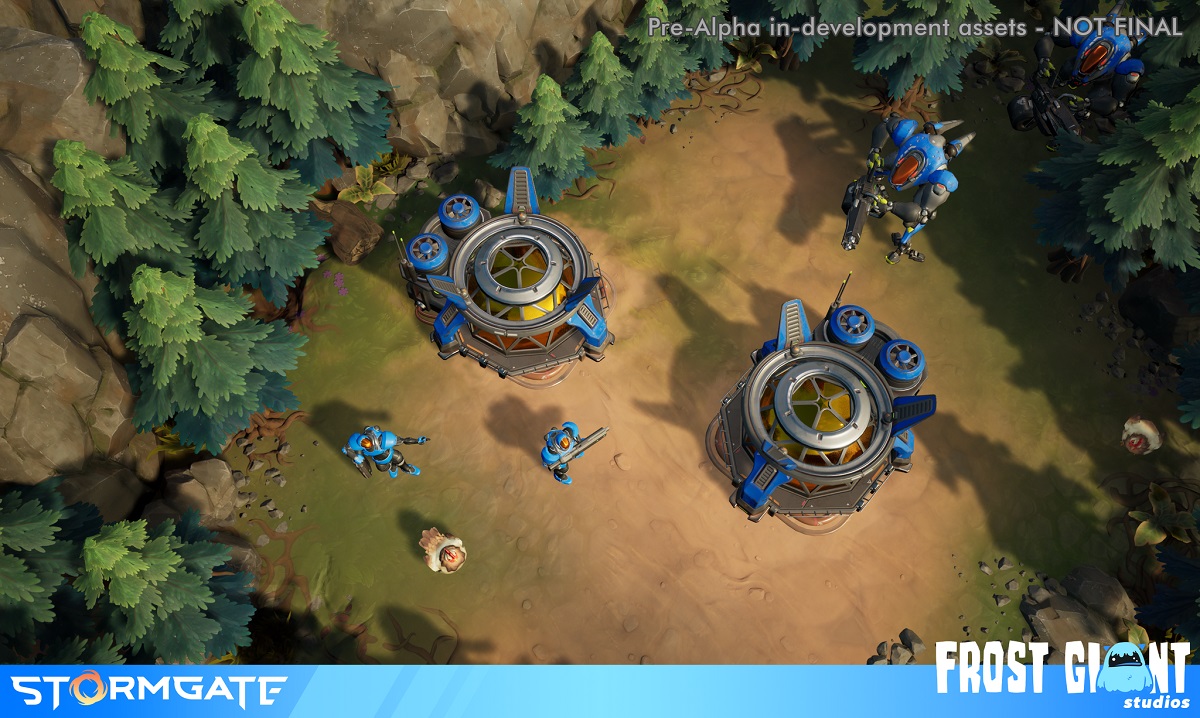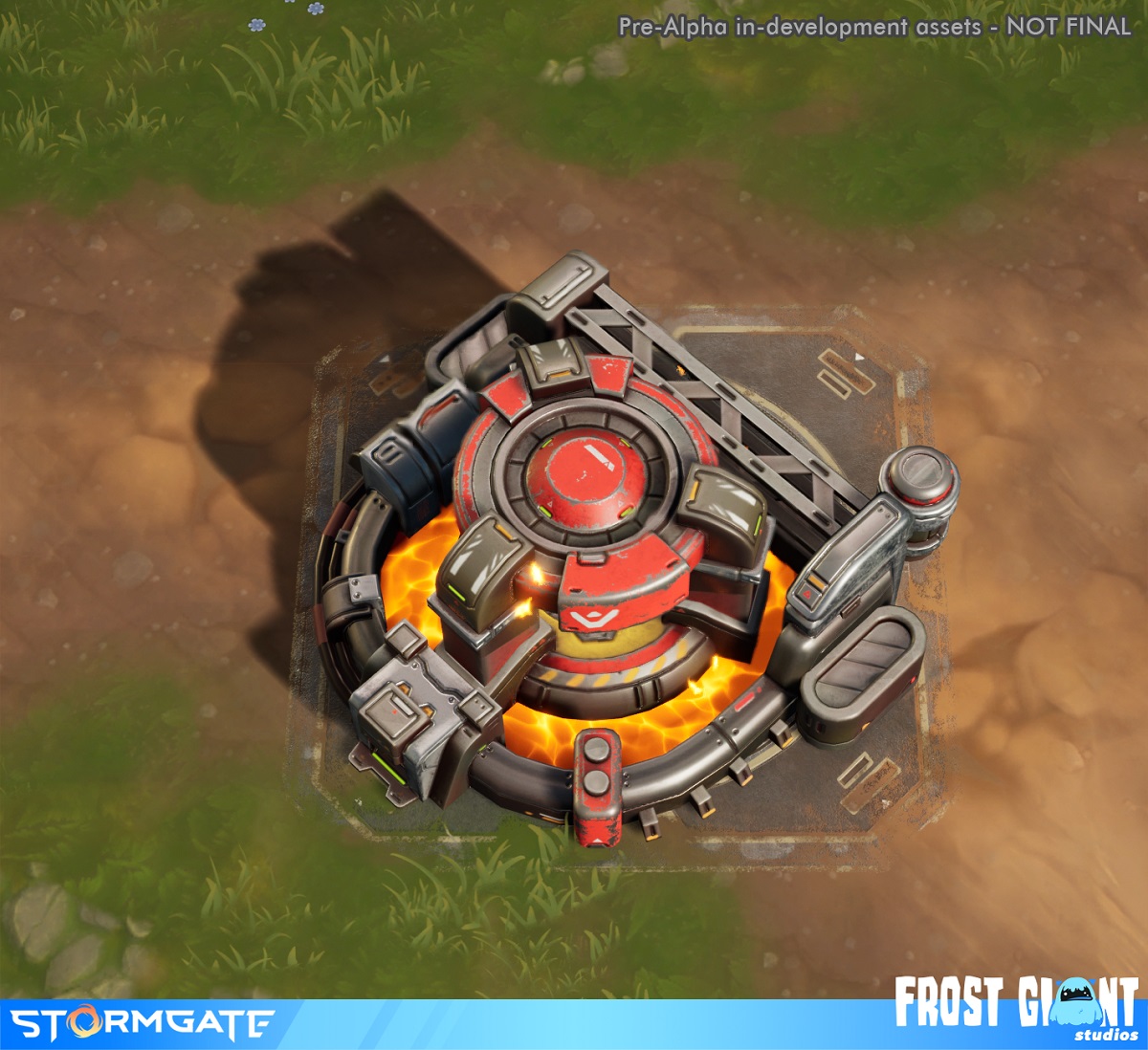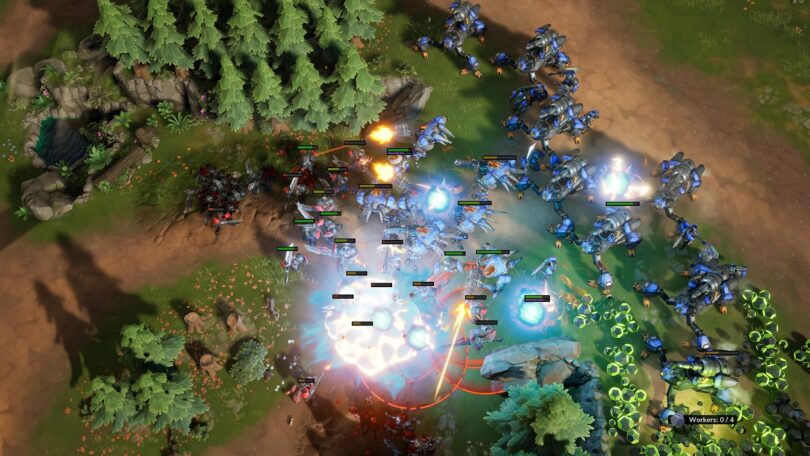Missed the GamesBeat Summit excitement? Don’t worry! Tune in now to catch all of the live and virtual sessions here.
I was finally able to play a round of Stormgate, the new real-time strategy “science fantasy” game from Frost Giant Studios, which revealed early gameplay today at the PC Gaming Show.
When I started building construction robots — called B.O.B. units — at my command post in the game, I felt like I was dispatching workers in a StarCraft game. It made me feel sad that we haven’t seen a StarCraft title for more than a decade. But you can think of it as a spiritual successor to both Warcraft and StarCraft.
Stormgate is a real-time strategy game that blends both science fiction and fantasy genres in one “science fantasy” storyline. It’s a free-to-play game for the PC coming to Steam in 2024. It blends that feeling of a sci-fi race of humans fighting a fantasy alien race. But it’s not a Blizzard title at all.
Irvine, California-based Frost Giant Studios was founded in 2020 by former Blizzard devs Tim Morten and
Tim Campbell, who helped create some of the most acclaimed and best-selling PC games of all time–as well as some of the most-watched esports–including Blizzard Entertainment’s WarCraft III and StarCraft II.

In the pre-alpha gameplay reveal, I played the race of humans, one of multiple races in the title, where future space-faring humans discover an ancient race from a fantasy universe and the result is a clash of civilizations. We haven’t yet seen the fantasy race, which is called the Infernal Host – demonic alien race that attacks Earth through a Stormgate.
The company also revealed the gameplay on the PC Gaming Show today in a demo match between
lead co-op designer Kevin “monk” Dong and SC2 legend Dario “TLO” Wünsch. The game is built in unreal Engine 5 along with Frost Giant’s own SnowPlay custom technology aimed at making it into a responsive RTS.
Game mechanics

I played a 1v1 match in single-player mode against a “peaceful” human enemy which didn’t go on a crazy expansion path. Meanwhile, the PC Gaming Show demoed a multiplayer match between two human players. Co-op modes will enter testing later this year. Your job is basically to build a base, create an army, and destroy the enemy’s bases, much like in a StarCraft match.
Some things will be familar to StarCraft fans.In the game, there are two main resources. One is called Luminite and it can be mined by up to 12 B.O.B. workers before the mining hits diminishing returns. It can be used to pay for nearly everything and it looks like gold being mined from the ground.
A second resource that glows green is Therium, which is used to pay for advanced units and structures, as well as upgrades. It gradually spreads and enriches when mined, providing players with options about where they should expand. It appears in exposed patches or underground veins.
The B.O.B.s that mine these resources are smiley-faced robot worker units who harvest resources, build structures, repair mechanical units, and even muster a solid defense in a pinch. They can work together to build a structure, and the game nicely shows when you have too many units on a particular mine.
There are also S.C.O.U.T. units, which are robot dogs (with laser eyes) that have heightened senses that can even identify the presence of enemies still concealed by the fog of war. With a warning howl, S.C.O.U.T.s can activate advanced ocular scanners to temporarily see further, including through forests that would normally block their vision.
Lancers are blade-swinging frontline soldiers with long reach. Their Lancer Shields upgrade gives them the ability to shrug off damaging blows. There are also Exo units, which are versatile soldiers armed with reliable rifles. They can move at double-time.
The Medtech is a support unit that can heal and repair allies and enhance nearby forces. With Medtech Adept Training, can unleash a swarm of nanobots to either attack an enemy, or heal an injured ally.
Atlas is a long-range artillery mechs that rain down area-of-effect damage. With the Purification Ordnance upgrade, its attacks leave behind a damaging field of flames. Atlas attacks cause friendly fire damage.
And the Evac Transport is a flying ship that picks up and drop off allied units, including a deployed
Atlas, to reposition them strategically or whisk them away from danger.
The most exciting units

The Vulcans are hulking mechs. They carry a loud Gatling gun that spins up to deal increased damage. The Jump Jets upgrade allows the Vulcan to reposition in combat and can stun any enemies in its way. Can also be used to clear out trees.
These units fire piercing rounds that can punch through multiple units in a straight line, dealing
damage to all of them. There are also some other big units that work in concert with the mechs, like the aforementioned Atlas, to give a sense of combined arms tactics.
The devs say they are still evaluating how big and powerful to make these units, and how many of them can be packed in the same area before it starts looking overcrowded with units.
Game structures

You start out with a Command Post, a Human HQ which produces B.O.B. worker units. It upgrades to Central Command to unlock access to Tier 2 units. Tier 3 is coming soon. The Command Post can trigger an Overcharge on nearby B.O.B. units, temporarily diverting power to combat systems (attack speed and armor).
The Habitat is a simple housing unit that increases supply. You must build these to expand your army. The Barracks produces Tier 1 units such as the S.C.O.U.T., Lancer, Exo, and Medtech.
The Mech Bay is a production facility for the Vulcan, Atlas, and more. The Therium Refinery is a secondary resource dropoff and research for various passive upgrades. The Biokinetics Lab does research upgrades for infantry, such as Lancer Shields.
The Machine Lab is a research facility that handles upgrades for mechanical and air units. It has a conveyor belt. The Sentry Turret is a beefy looking ground turret that targets ground and air enemies and provides some peace of mind when your units are on an offensive away from the base.
Single-player gameplay

In my peaceful battle, I got a good sense for what it’s like to build your base, expand to new resource sites, and upgrade buildings so you can build a mix of builders and army units. My S.C.O.U.T.s went out to explore the map and they quickly found the enemy base. I posted a guard at the exit to the base and then started building as fast as I could. I liked this mode because it let me focus on building and understanding the hassle of
I was able to build a lot of the home base buildings before moving on to new resource locations. I laughed when I saw some chickens wandering on the map. There were some special locations that my soldiers had to unlock through combat, while there were also underground resources locations that also had to be uncovered before I could start mining them.
The most impressive units, as mentioned, were the big mechs that tower over the infantry. They were loud and mowed down infantry units. But they weren’t invulnerable to attack. The terrain also made a difference, as the base areas could have one or multiple routes for units to roam. The map I played on reminded me of a MOBA map, with clear lanes that could be explored or guarded as needed.
The game had a lot of familiar features from the old RTS days, but it also had beautiful modern imagery and improvements that you’ll see discussed in my interview with the cofounders.
I’m looking forward to see how the humans fare against the Infernal Horde of demons.
GamesBeat’s creed when covering the game industry is “where passion meets business.” What does this mean? We want to tell you how the news matters to you — not just as a decision-maker at a game studio, but also as a fan of games. Whether you read our articles, listen to our podcasts, or watch our videos, GamesBeat will help you learn about the industry and enjoy engaging with it. Discover our Briefings.





